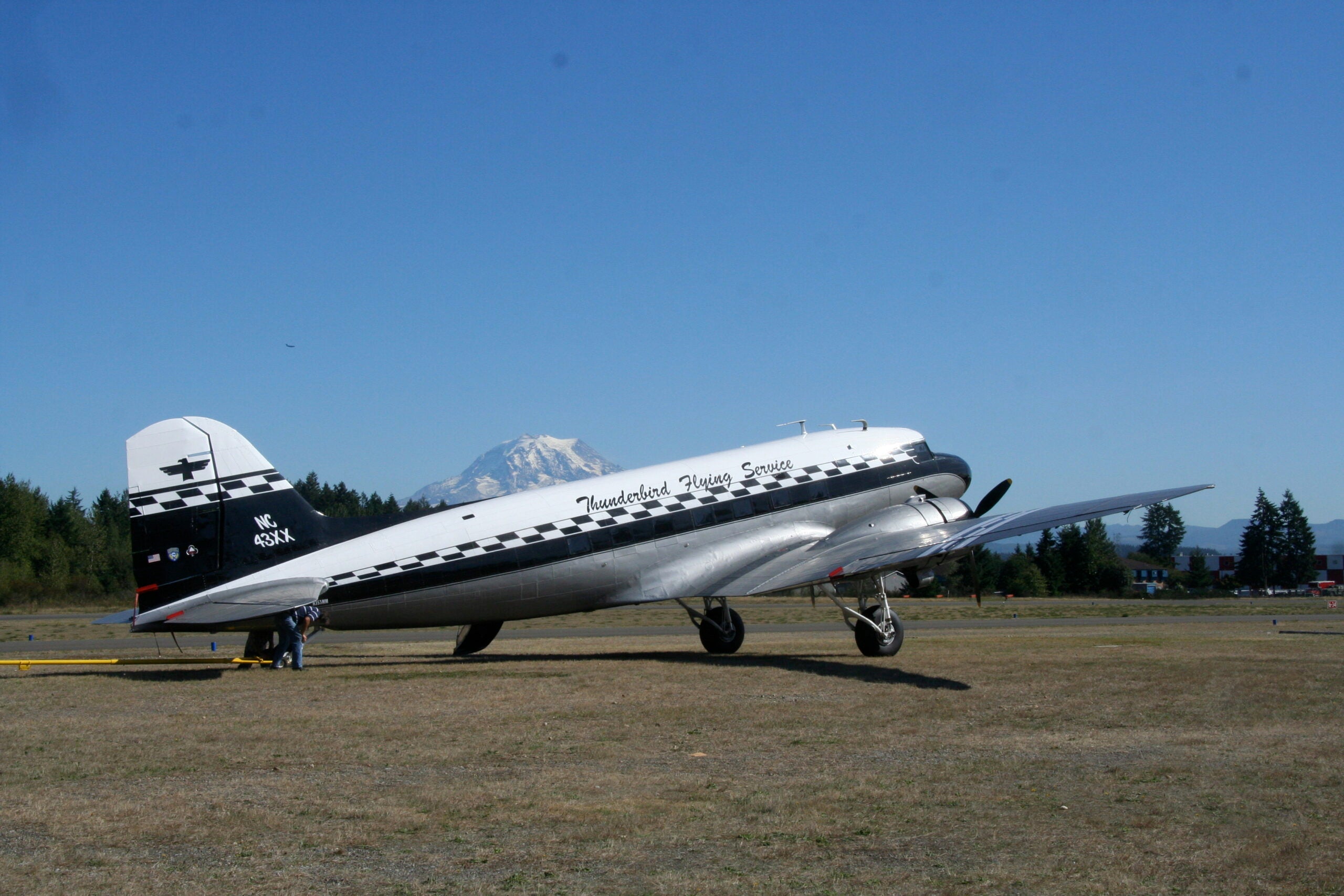Where were you when you learned about the “12 seconds that changed the world in 1903,” when Orville and Wilbur Wright, a pair of bicycle mechanics from Ohio, achieved powered flight for the first time?
For me it was in the third grade. We had a daily assignment where the teacher would write a cryptic topic sentence on the board, and then we had to research it and write a paragraph.
“What famous aviation event happened today in 1903?”
There was no such thing as Google in those days, so we had to use the library and large leather-bound encyclopedias. Full disclosure: I read them cover to cover—especially the section on aviation, which noted that on December 17, 1903, powered flight took place for the first time at Kitty Hawk, North Carolina.
December 17, a Day of Aviation Milestones
Many years later, I learned of another milestone aviation event on this date—the first flight of the Douglas DC-3 in 1935.
The Douglas DC-3 was the next evolution of the DC-2, the all-metal, mono-wing airliner that was introducing the world to travel by air. The larger DC-3 was designed to allow sleeping berths as travel took much longer than it does today. The aircraft was officially known as the Douglas Sleeper Transport (DST).
At the time, air travel was glamorous. People dressed up to go on an airliner like they did for going to church. The aircraft were nonpressurized, and it was not uncommon for the stewardess to hand out chewing gum as you boarded the aircraft.
The DC-3s were powered by Pratt & Whitney radial engines, and the cabins could seat approximately 28. By today’s standards, the cabins felt luxurious because you weren’t packed in like cattle.
Versatile, Durable Airframe
Unlike the heavier jet airliners of later years, the DC-3 did not need 5,000-plus feet of paved runway for takeoff and landing. Municipal runways in the 1930s and ’40s ranged from 2,500 to 4,000 feet and were often made of turf.
In Washington, there are still turf runways along the highways that connect the west side of the state with the east side that, according to aviation historians, were built in the 1930s as emergency runways for DC-3s.
- READ MORE: Parallel Parking a DC-3
The DC-3s airframe proved to be very versatile and durable. This is obvious today as there are still many DC-3 in service around the world. Many have had engine conversions done, such as the Baseler BT-67, but their bones are all DC-3.
The military made extensive use of the DC-3, designating them C-47 Skytrain/Dakota. They carried troops all over the world and towed gliders to France on D-Day. During the Berlin Airlift they were also extensively bringing much-needed supplies into the blockaded city.

After the war, many surviving DC-3s were converted to civilian use as cargo haulers or airliners. Some kept their military heritage, such as NC43XX, a 1944 Douglas (designation DS3C-SC3G, according to its current FAA registration) that was parked outside Spencer Aircraft at Pierce County Airport-Thun Field (KPLU). The magnificent black-and-white aircraft bore the name “Thunderbird Flying Service” and was a natural attention getter.
In 2008, I had the opportunity to learn more about this magnificent bird with the help of Dean Boyd, my aviation mentor who had logged thousands of hours as a crew chief with the U.S. Air Force in multiple aircraft, including C-47s. Boyd gave me a tip-to-tail tour of a DC-3 on one of those days when the weather was too poor to fly.

The aircraft was privately owned, and the owner had taken great care to restore it to a time when air travel was considered an adventure. The cabin was adorned in muted grays and black and white, giving it an art-deco vibe. It was spacious, like an old-style movie theater. The cockpit, while sporting modern avionics and radios, still had enough levers and knobs to remind you this was an airplane you had to fly and stay two steps ahead of at all times.
On the pilot side of the cockpit exterior was a smaller door. It looked too small for baggage or a person to enter, and I said as much to Boyd, who told me this was the “hamburger door” where the stewardess climbed a ladder to hand food to the pilots.
The tail of this particular airplane had decals on it indicating military service and a large hook under the tail that Boyd said was likely an attachment point for military gliders.
The aircraft was sold, and on August 18, 2013, departed Washington state. I still look for it every year at EAA AirVenture.
Doing the Math
To really appreciate the significance of both the Wright brothers’ first flight and the DC-3, you have to do the math. A mere 32 years passed between the events.
The first powered airplanes were little more than large kites made of wood, fabric, and wire with powerplants that were little more than what would be today a glorified lawnmower engine. Literally within a person’s lifetime, technology advanced to enable us to travel around the world.
The post Remembering the Day of First Flights appeared first on FLYING Magazine.





